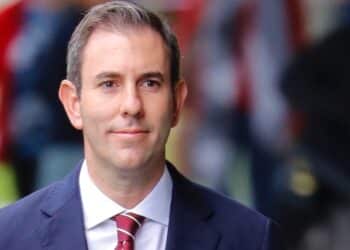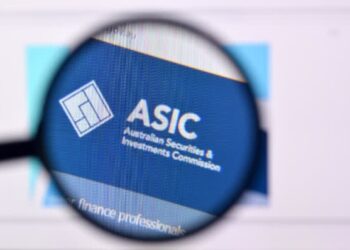The financial advice profession has, with the exception of the 10 largest financial businesses that covered the pre-CSLR period, taken the bulk of the hit for the Compensation Scheme of Last Resort (CSLR).
However, it is not the only subsector that the scheme covers, with credit providers, credit intermediaries, and securities dealers also subject to covering the cost of compensation for misdeeds of others in their own sectors.
Advice being the largest component thus far, and the news that the CSLR expects the upcoming 2025–26 levy attributed to personal financial advice to exceed the $20 million subsector cap, has got the other subsectors concerned about how the Financial Services Minister would choose to apportion any levy above $20 million.
Essentially, the minister has the ability, up to $250 million total spend, to levy as he wishes.
Any amount beyond the subsector cap could be attributed entirely to the advice profession, it could be spread out over future years, and he also has the option to spread it over the other subsectors or even a broader base of sectors above and beyond those who are already covered by the CSLR.
Speaking with ifa in October, Phil Anderson, Financial Advice Association Australia (FAAA) general manager policy, advocacy and standards, said the hope is that the minister will spread the load across a number of subsectors.
“At the end of the day, our primary goal within the current legislation – so this is excluding the prospect of legislation for a more serious fix – is to ensure that any excess above the sector cap is picked up by other sectors, and that we’re dealing with a maximum of $20 million in any one year,” he told ifa.
“I know that this is going to be uncomfortable for many, but maybe that is not such a bad outcome. We don’t want to be paying that, but if we contrast that with what a worst case could be – if you had to pay $50 million in any one year, that’s talking about $3,000 [per adviser].
“So, our current policy priority is to get confidence that the government and the minister in particular, would not choose to allocate anything in excess of $20 million in any one year to the advice profession, and that invariably means over the course of the next three years, other sectors would need to be asked to contribute.”
Other industries don’t want to ‘bear additional financial obligations’
With submissions to the Senate economics references committee’s inquiry into the Dixon Advisory collapse starting to be released, it is clear that this option has sent warning signals to other industries.
The Mortgage and Finance Association of Australia (MFAA), for instance, has argued that it would be unfair for mortgage brokers to get slugged for complaints that have nothing to do with the credit intermediary subsector, noting that it is estimated to account for just 10 complaints in the second levy period.
“There are no indications of an increase in claims for this subsector beyond these projections, with uncertainties affecting the levy period primarily attributed to the financial advice (i.e. wealth management) subsector,” the MFAA said.
It added: “If the special levy is distributed across several subsectors, entities not directly responsible for excess claims may bear additional financial obligations. This cross-subsidisation can lead to increased costs for subsectors with minimal claims on the CSLR, including small broking businesses.”
This, the MFAA explained, would introduce a “moral hazard” and raise “questions of fairness”.
“Placing a disproportionate financial burden on a sector with minimal claim activity not only challenges the principles of equitable treatment but also risks creating incentives that allow higher-risk sectors to rely on cross-subsidisation rather than addressing risk exposures within that subsector,” the submission said.
“We welcome the opportunity for dialogue on solutions to address the issue of exceeding the subsector cap without imposing additional cost burdens on credit intermediaries and recommend further consultation on this issue.”
The Australian Banking Association (ABA), meanwhile, highlighted that many of its members have already covered a chunk of the compensation for the collapse of Dixon Advisory through the $241 million pre-CSLR levy – $203 million of which related to Dixon.
While it raised questions around whether the CSLR truly has been used as a last resort thus far, particularly whether further options could have been pursued before the scheme was utilised in regard to Dixon Advisory cases, it also took aim at the possibility of a special levy.
“Under section 1069H(5)(b)) of the Corporations Act regarding ministerial discretion, the minister must consider the impact of imposing a special levy on the viability of the specified subsector and the financial system more broadly,” the ABA said.
“We have previously highlighted that the CSLR scheme allows losses instigated by a single subsector’s oversight to be allocated among uninvolved subsectors.
“Any application of ministerial discretion must not exacerbate further cross-subsidisation by creating a precedent which does not encourage subsectors who have created losses (paid for by other subsectors) to uplift their own standards and reduce/prevent future harm to Australian consumers.”
Similarly, the Insurance Council of Australia said it opposed any expansion of the CSLR, including that any application of the ministerial discretion “must not inadvertently discourage the subsectors that have created the losses to uplift their standards and prevent future consumer harm”.
“It is crucial that any underlying issues within sectors are addressed first, as opposed to a focus on the remediation process, to help avoid significant stress and anxiety for consumers,” it said in its submission.




This bill should be footed by the top 10, as the cost of solving the Dixon’s debacle is one created by the directors of Dixons and E&P. The same with all previous “financial planning” issues where the executives instructed financial planners to work in particular ways.
If the Top 10 have to pay, maybe the message will sink in that this behaviour is not acceptable.
Accountants and Lawyers should have to contribute to the CSLR seeing most of the complaints for the CSLR relate to SMSF which their profession setups Accountants set up the SMSF, Lawyers setup the Bare Trust and all the companies of these financial companies that go bust all get advice from lawyers and accountants time for them to start contributing to the CSLR
The collapse of Dixon is on Asic and the government and hence should be paid for by them not innocent and hard working planners.
How about ASIC doesn’t allow integrated products that dealers make money from for promoting or the spate of property investment failures where no SI clients are encouraged to set up an SMSF and transfer al their funds into one product and then they pay ‘promoter’ fees
How about E&P pay the $18 Million debt forgiven by a failing Dixon’s.
How about E&P pay for the 39 Advisers and 3,000 clients, estimated $30 to $40 Million in value, Dodgy Dixon’s Illegally Phoenixed to E&AP.
This whole thing stinks beyond belief
Rare non-insane comment on an IFA article.